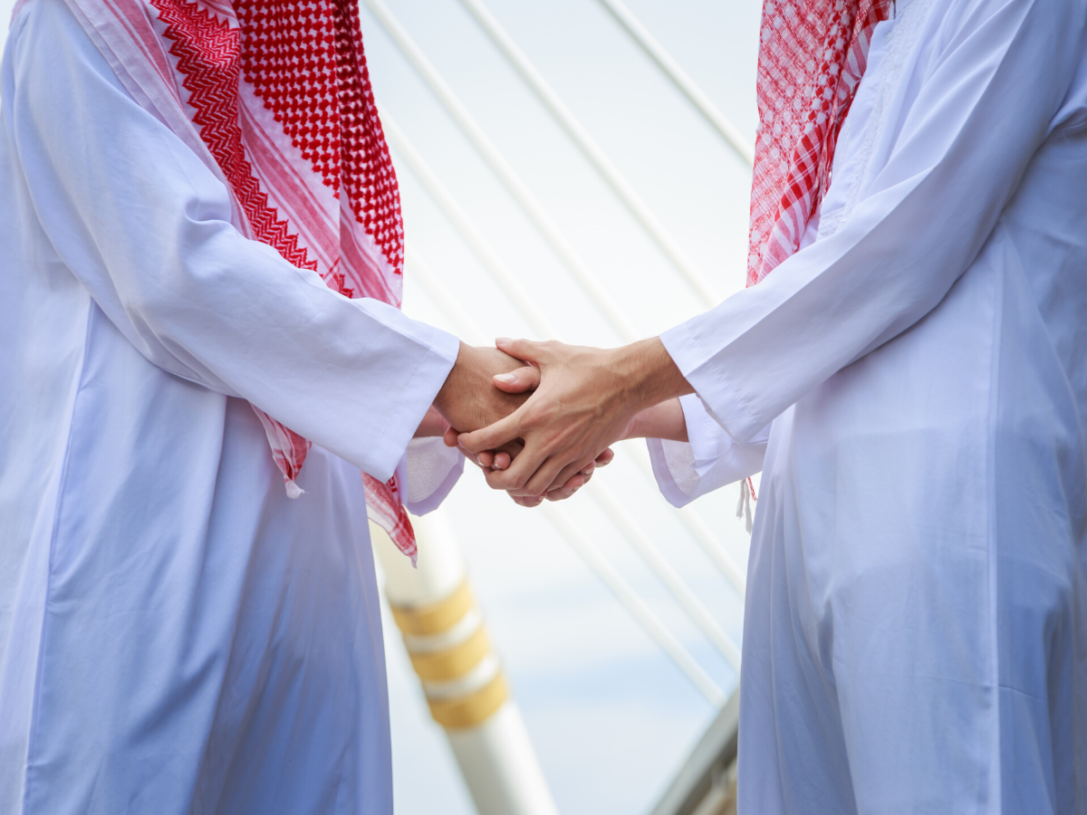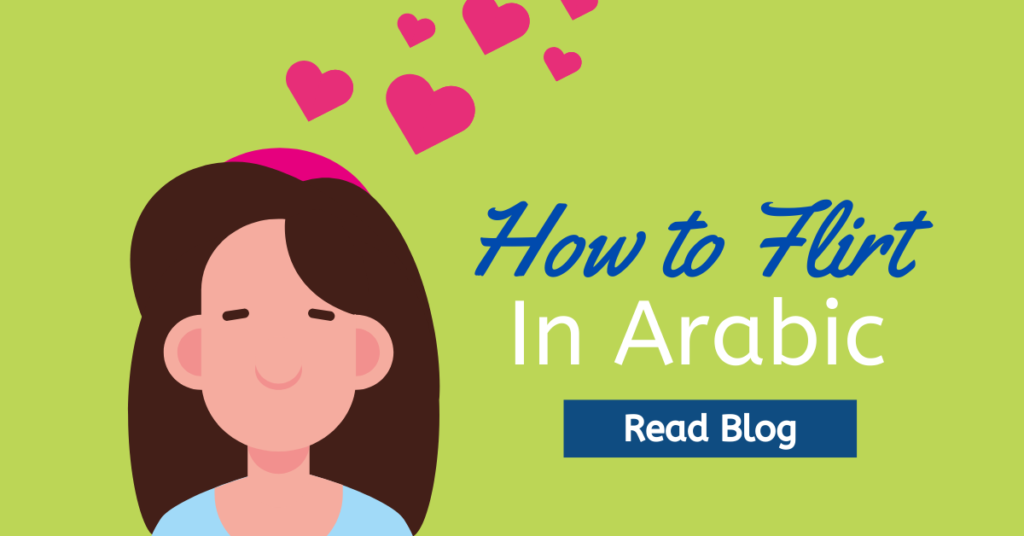When it comes to the Arabic language there are many ways to greet someone. There are different greetings used for different times of the day. The greeting you choose to use also depends on the relationship you have with the other person you are saying ‘hello’ to such as a friend, the elderly or someone with authority.
LEARN ARABIC WITH OUR WIDE RANGE OF COURSES
Learn how to say “hello” in Arabic in 14 different ways and be prepared to greet people in any Arab country and in any situation.
Sabaho ( صباحو )
Usage: Informal
“Sabaho” is a term used in the morning, which means “Morning” in English. It’s close to saying “Good Morning” but it’s used casually between people. A reply to “Sabaho” would be “Sabaho” or “Sabah el kheir.”
Sabah el kheir ( صباح الخير )
Usage: Formal and Informal
“Sabah el kheir” means “Good Morning” and it is also used in the morning. It can be used in formal and informal occasions, and a reply to “Sabah el kheir” can be “Sabah el noor” or “Sabaho.”
Sabah el noor ( صباح النور )
Usage: Formal and Informal
“Sabah el noor” means the “morning of the bright light”. It is a beautiful greeting and you are basically wishing the other person a bright morning. A reply can be “Sabaho” or “Sabah el kheir.”
Yeseed sabahkom ( يسعد صباحكم )
Usage: Formal and Informal
“Yeseed sabahkom” means ”may you have a nice morning” and is used before noon. A reply can be “Wa sabahkom” which means “and your morning.”
Jumpstart Learning Arabic with Cudoo's Online Courses
Full lifetime access
Certificate of completion
One time payment
Salam Alaikum ( السلام عليكم )
Usage: Formal
“Salam Alaikum” is a traditional Arabic greeting (also commonly used by non-Arab Muslim speakers) which means “peace be upon you”. it can be used on all occasions. “Wa Alaykum as-salam,” meaning “and unto you peace,” is the standard response.
Awafi ( عوافي )
Usage: Formal and Informal
“Awafi” meaning “health” is used to wish someone to stay in good health at what they are doing. It is usually used when you are greeting somebody that is doing or working on something, and their reply would be “Awafi.”
Ya’teek el ‘aafye ( يعطيك العافيه )
Usage: Formal and Informal
“Ya’teek el ‘aafye” is very similar to “Awafi” yet the difference is that you are saying that “may God give you good health.” A reply would be “Allah yiaafik” which also means “may God give you good health.“
Naharak Saa’id ( نهارك سعيد )
Usage: Formal and Informal
“Naharak saa’id” means “May you have a happy or a good day” it is a kind greeting and can be used in any occasion. The other person can reply by saying “Wa naharak” which means “and your day.”
Yeseed masakom ( يسعد مساكم )
Usage: Formal and Informal
Yeseed masakom means ”may you have a nice evening” and is used in the evening. A reply would be “Wa masakom” which means and “may you have a nice evening.”
Marhaba ( مرحبا )
Usage: Informal
“Marhaba” is simply “hello” in Arabic. You can use “Marhaba” at any time of the day and in any informal occasion. The other person can reply in several ways such as “Marhaba,” “Sabaho,” and “Sabah el kheir.”
Marahib ( مراحب )
Usage: Informal
“Marahib” is saying ”hello” but to a group of people, and it is informal. You can use “Marahib” at any time of the day as well. They would reply back with “Marhaba.”
Sa’ide ( سعيدي )
Usage: Informal
“Sa’idi” means “Nights” and is a greeting used at night. You can use it when you are greeting a group or a person. A reply would be “Yeseed masak” which means “may you have a nice evening” or “Sa’ide.”
Ahlan wa sahlan ( أهلا و سهلا )
Usage: Formal and Informal
“Ahlan wa sahlan” means ”welcome” but it is used as a general greeting in the Arab region. It is referred to as a “Hello”. The other person can reply with either “ahlan wa sahlan,” “Ahlan,” or “Marhaba.”
Ahlan ( أهلا ) or Halaa ( هلا )
Usage: Informal
“Ahlan” or “Halaa” is the same as “ahlan wa sahlan” but more informal. In the Arab region, it is considered a “hi”. A reply would be “ahlan” or “halaa.”
These 14 Arabic words and phrases can be used and understood in all Arab countries, however, gestures when greeting can differ from country to country and are often influenced by the culture.
When Arabs say ‘hello’ this is how they greet one another in their country.
Lebanon
In Lebanon, greetings are usually accompanied by three kisses on alternating cheeks if it has been a while since you have seen the person you are greeting. If it’s a person you see frequently one kiss on the cheek is enough. A ‘hello’ in Arabic accompinied by a smile and a handshake can be used as well in Lebanon.
An important note: if you are greeting members of the opposite gender and they have an Islamic dress on it’s better to only greet verbally. This applies to all Arab countries.
Syria
In Syria, greetings between close people of the same gender are two kisses on each cheek between males, or a hug for males or females. Opposite genders don’t initiate physical contact unless a females stretch out their hands first. For formal situations, a handshake is more appropriate.
UAE
Long handshakes, hugs, and praise are exchanged in greeting between people of the same gender. If the person you are greeting is a relative you touch noses twice (for males) exchange hugs (for females). Interaction between males and females in the UAE is more conservative. If a female wishes to shake hands she will make it clear and if not a male should not take the initiative.
Jordan
In Jordan greeting are rather more formal than in other Arab countries. Usually, greetings are accompanied only with a smile or by placing your hand on your heart (palm facing your heart) but between relatives and friends men shake hands and sometimes kiss cheeks. Greetings between opposite genders are very formal and no handshaking takes place unless the female takes initiative.
Qatar
In Qatar, if it’s a formal greeting between two people of the same gender you shake hands. if you know the person you are greeting is close then you can use three cheek kisses and you always use the right cheek. If the person you are greeting is a relative, between males you touch noses twice, between females you exchange hugs. If you are greeting members of the opposite gender it is better to greet only verbally unless the female implies a handshake.
Egypt
In Egypt, handshakes are used in greetings between two people of the same gender. If you are meeting them for the first time a handshake takes place. If it’s between friends and relatives a kiss on both cheeks with a hug while shaking hands is the norm. Between male and female a handshake is acceptable only when the female extends her arm first, and if she doesn’t the male bows his head as a sign of greeting.
Saudi Arabia
The most used form of greeting is a handshake among members of the same gender. Greetings among friends of the same gender involve kisses on the cheeks, either all on one cheek or alternate cheeks. If Saudi men are very close to the person they are meeting they might greet by touching noses. Between females, greetings include hugs and two or three kisses on each cheek. Greetings between males and females include no physical contact. A nod or a verbal greeting is enough. In general Saudi’s do not extend their hand to touch a woman if she is wearing a Hijab.
Conclusion
The Arabic language is a deep and expressive language and the word ‘hello’ is no exception. There are so many different ways to greet people and say hello in Arabic. No matter where you are, you never know where a simple ‘Marhaba’ can take you. It can open doors to new friendships and opportunities and you may even have someone say to you ‘You had me at Marhaba!’
The Arab region tries to preserve tradition in daily activities and goes the extra mile to keep it prevalent in times where external influences are taking over. Learn more about the language by enrolling in our Arabic language courses available from beginner to more advanced levels.
Andrie Steliou
Latest posts by Andrie Steliou (see all)
- 8 Ways to Help Keep Your Child Focused and Engaged in Online Learning - October 19, 2022
- How to Improve Social Intelligence Skills? - May 10, 2022
- How to Improve Organizational Skills at Workplace? - May 6, 2022


